Wan masonry of what once was a gleaming Mughal mainstay in Kashmir has become a metaphor of times. A polemic poet living under the shade of the wall calls it the first symbol of subjugation fading into obscurity now.
What’s speeding up its decay is the rule loathing the very name of the magnificent monarchs known for their art and aesthetics.
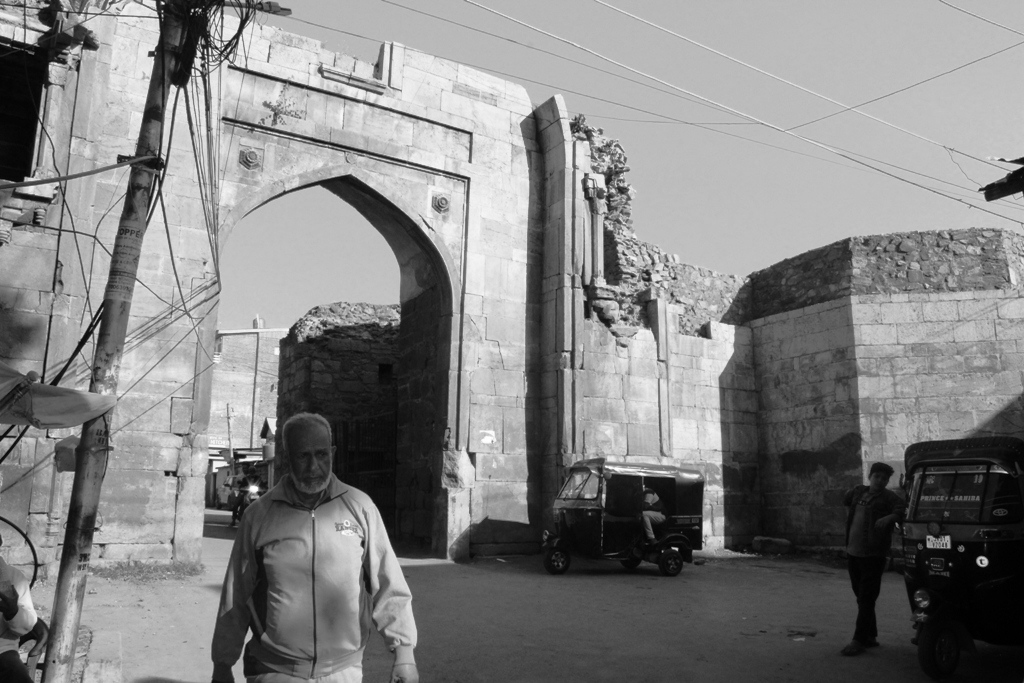
The five kilometres long citadel locally called Kaleei encompassing Koh-i-Maran Fort, Sharika temple and the Shrine of Sufi Saint Sheikh Hamza Makhdoom is the longest antique wall in the subcontinent.
But with time, the site has eroded its essence.
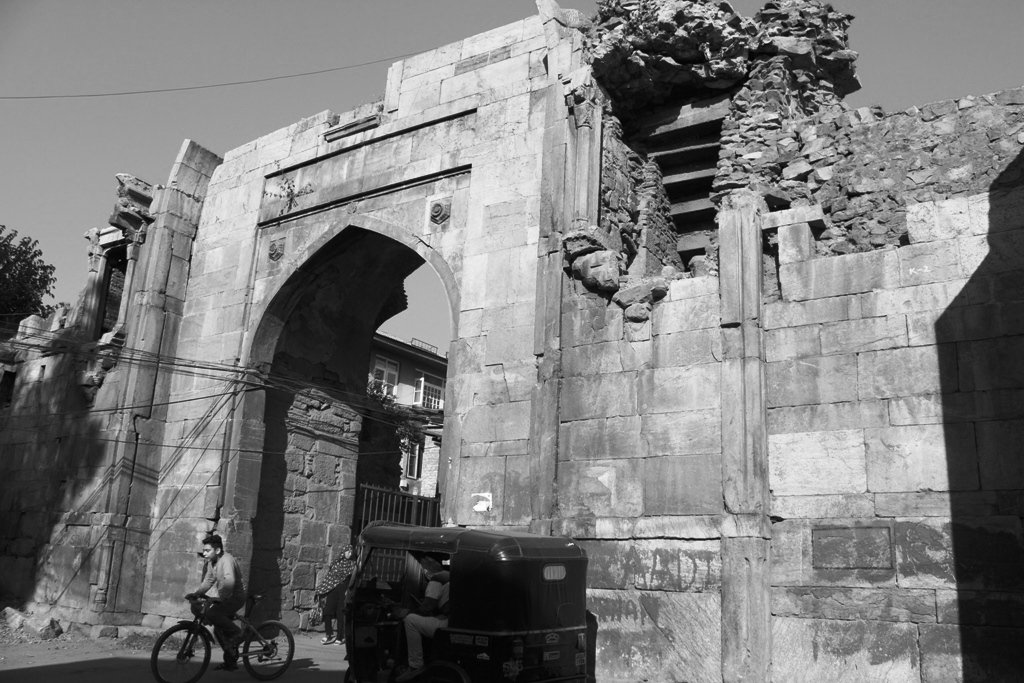
Before installing this wall, Akbar had to face a stiff resistance in Kashmir. The years between 1528 and 1586 are filled with local legends and valour accounts against the invading army of Mughals.
Years of siege and statecraft finally made the emperor of “Din-i Ilahi” stage a coup against Kashmir king Yusuf Chak in 1586.
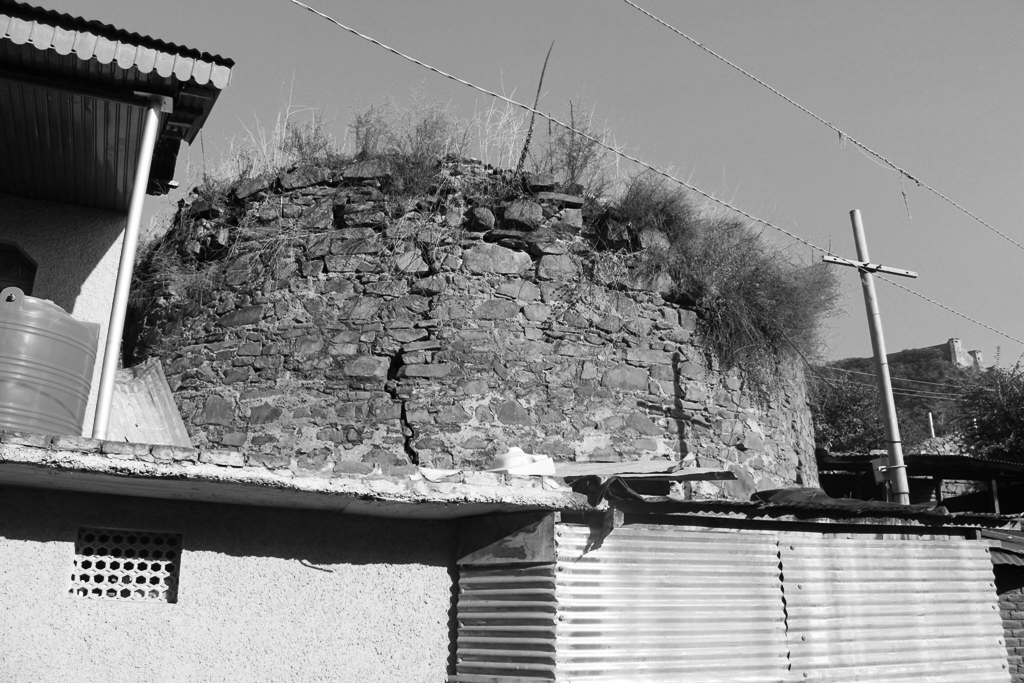
With Habba Khatoon’s Yusuf banished from his homeland, Akbar would build the stony sentry as the outer boundary girding the Zabarban Hill of Koh-i- Maran in 1590 — the year he visited Kashmir for the first time.
Since then, the enclosure has protected many foreign rulers who ruled from the heights of the hill overlooking the Kashmir capital. The elapsed defensive structure pierce through three different gates with watchtowers, historically used to protect the new empire.
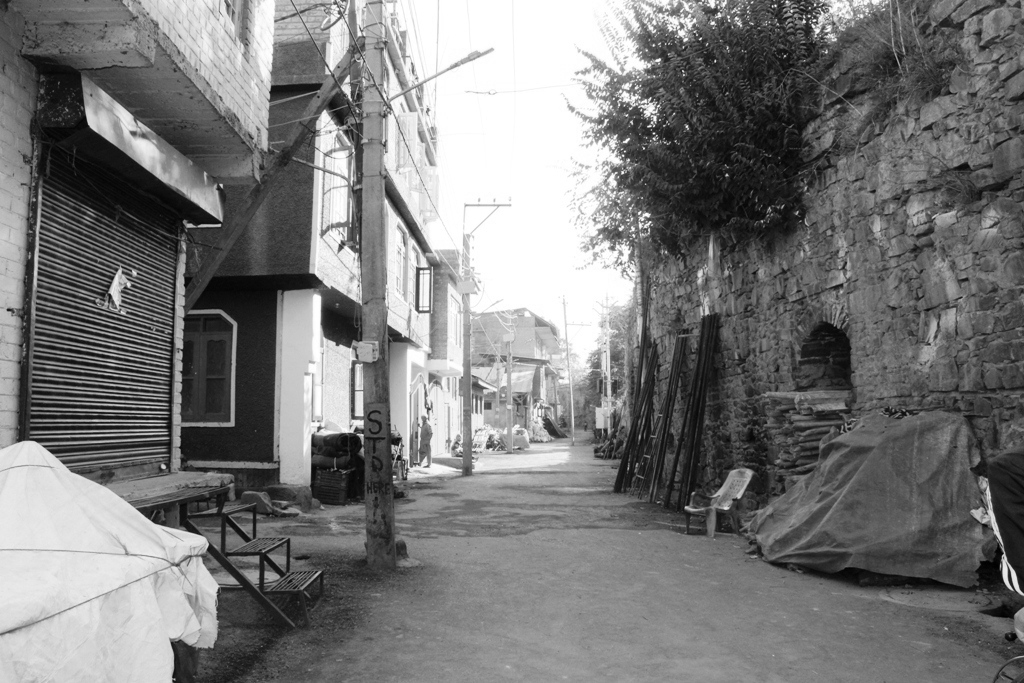
On the South-East side is the Kathi Darwaza, an arched gate with raised bastions on either side for the alert watchmen. The golden-brown architecture designed by rectangular shapes is filled with Persian writings describing its cost details.
On the right side of this gate is the board of the Archeological Survey of India declaring the site as ‘Protected Monument’ and a meter ahead, a large portion of the collapsed wall is evident.
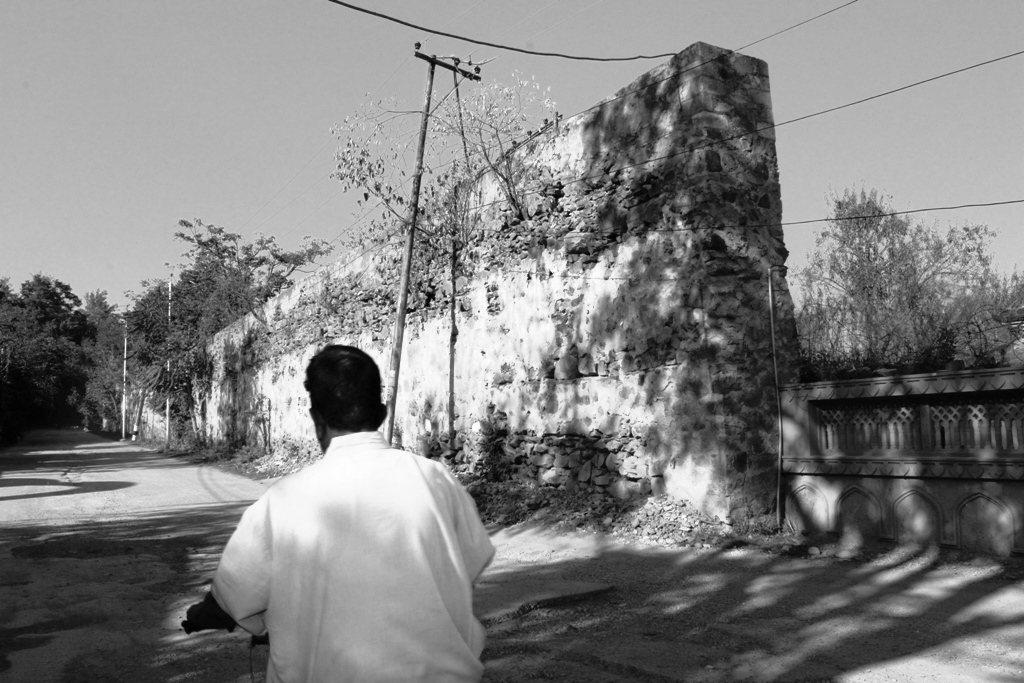
Along the wall is an enclosed graveyard that extends a few meters. Some ingenious inhabitants well-versed with the city and its chronicles said that some local Kashmiri labourers were also buried there during the citadel construction.
Those Mughal-era “begair” or forced labour deaths, the locals say, remain a concealed chapter of Kashmir history.
At a stone’s throw from these seasoned storytellers, the wall has disappeared, even paying way to constructions atop it, at many places. Some decades-old refurbished touches have also faded with time.
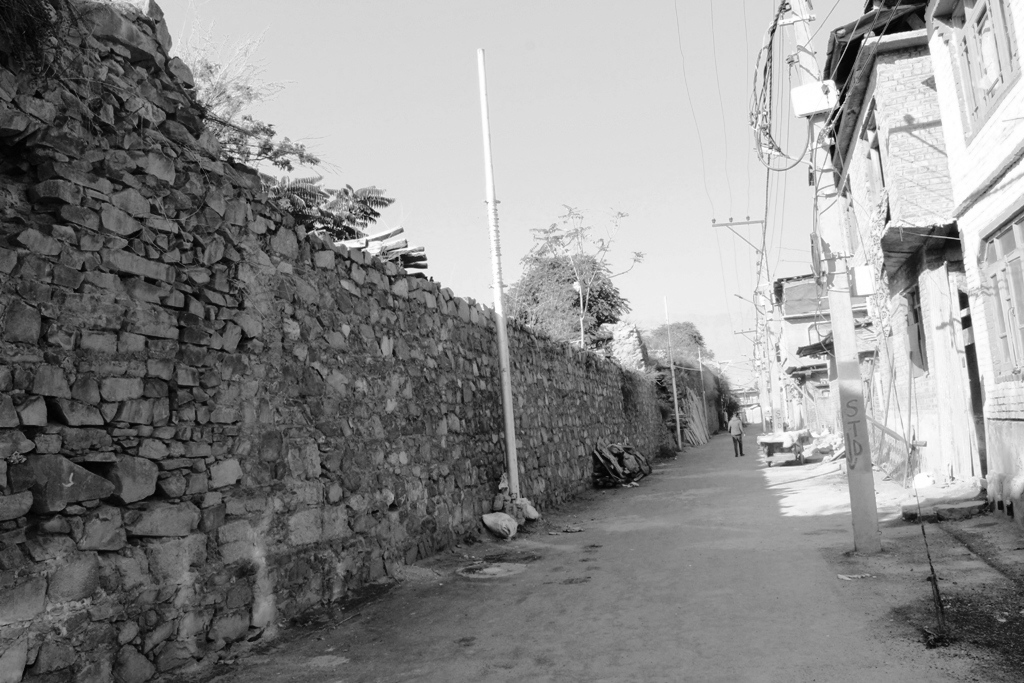
Nearby, the Bachhee Darwaza is the heritage corridor for the faithful ascending the hill abode of the saint. A year before Akbar took the valley, Saint Sheikh Hamza Makhdoom passed away. Since then his resting place has been drawing devotees in droves.
But while swarms arrive to seek salvation, many like a scholarly Kashmiri youth frequent the hill for some ‘high’ freethinking.
“Kashmiris had always hated foreign control and bravely challenged their assaults,” he said. “But this crumbling wall you see was built to shelter the Mughal coterie and troops. Since they were invaders, they needed a walled protection.”
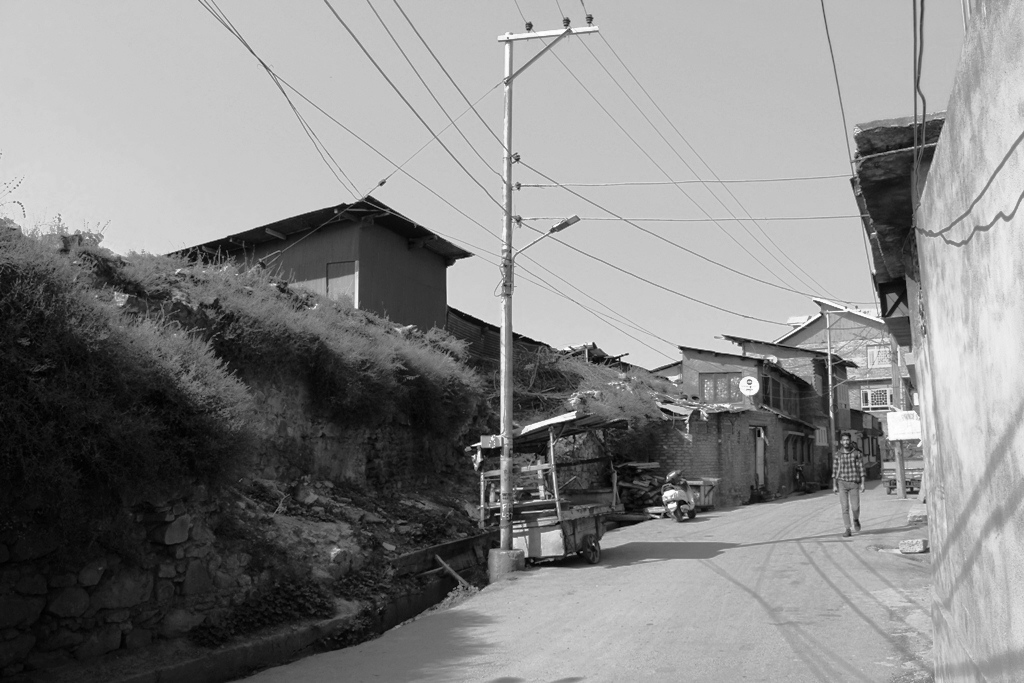
On the western side of Hawal, Sangeen Darwaza is still gleaming with golden hue. Its exteriors decorated with two corbelled windows each with a stair give access to the roof stand wrecked.
Historically, the gate was meant for private entries only. Towards its right, the wall merges with house-holdings and disappears within.
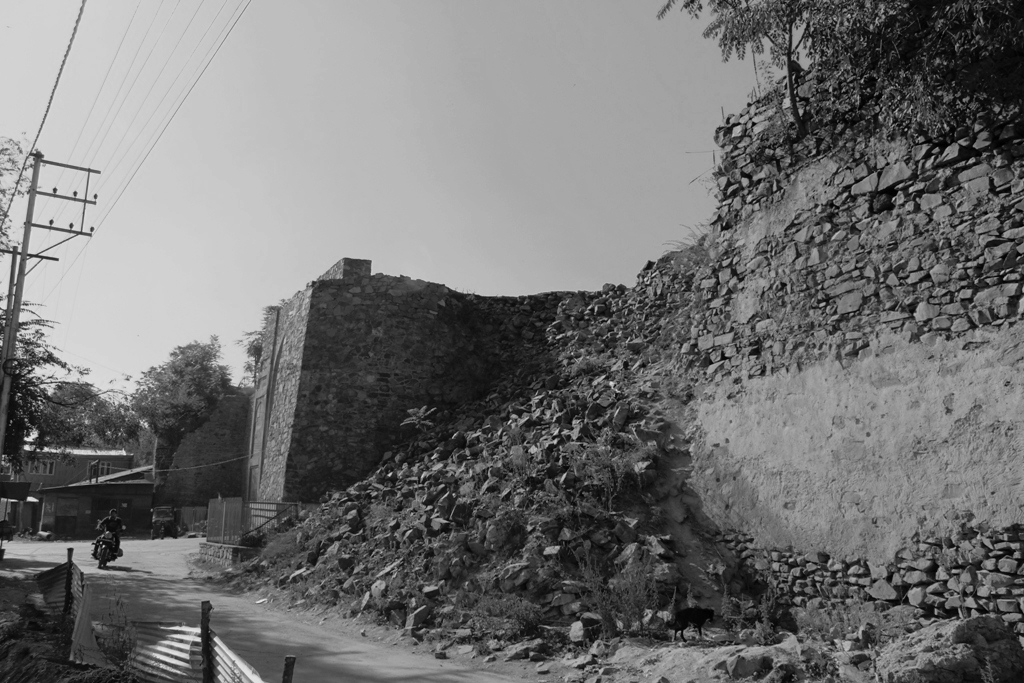
At the twilight, the symbol of Kashmir’s first subjugation looks dominated by counter assaults and the native reclamation of the space which once dominated the denizens and demarcated their dreads.